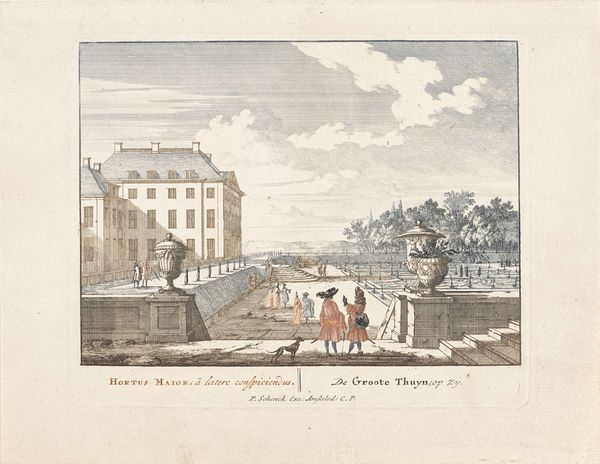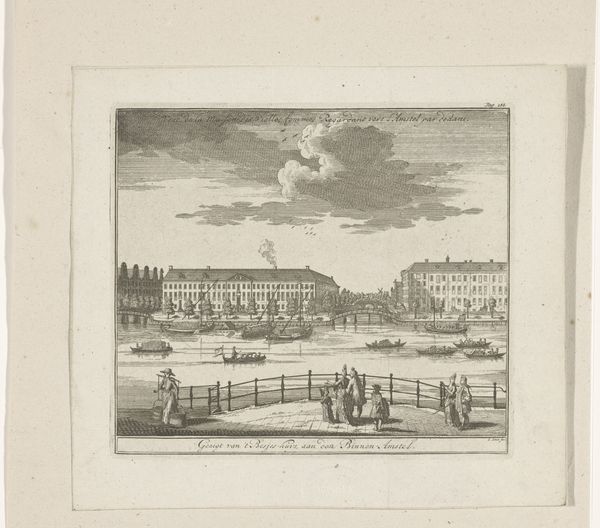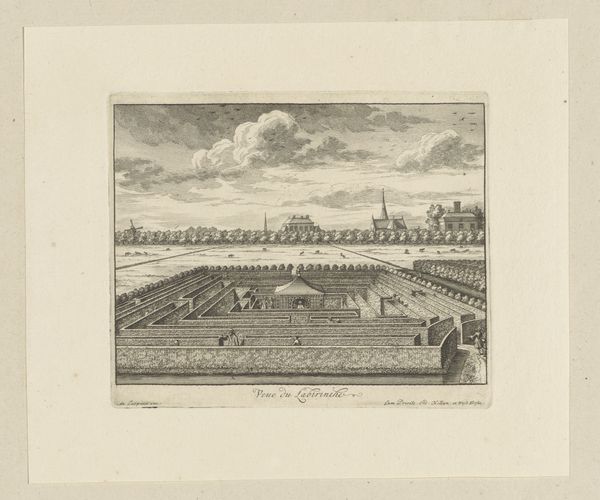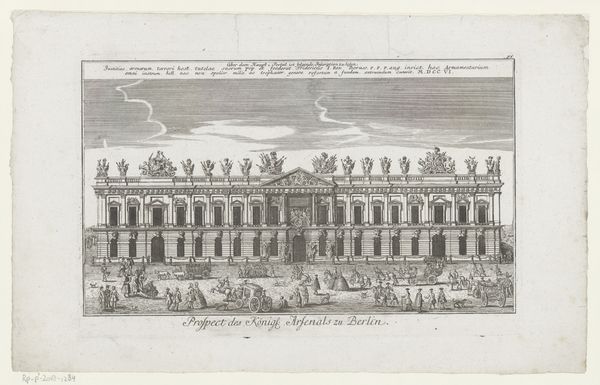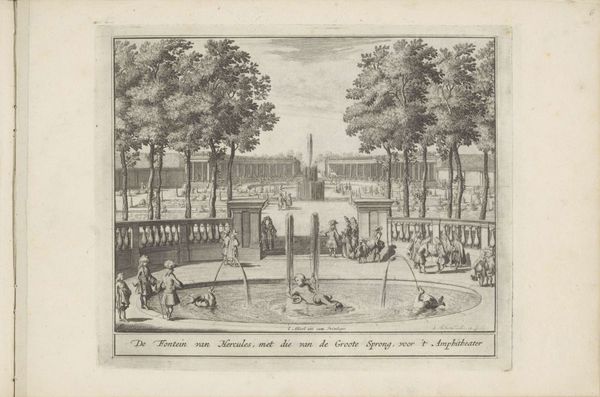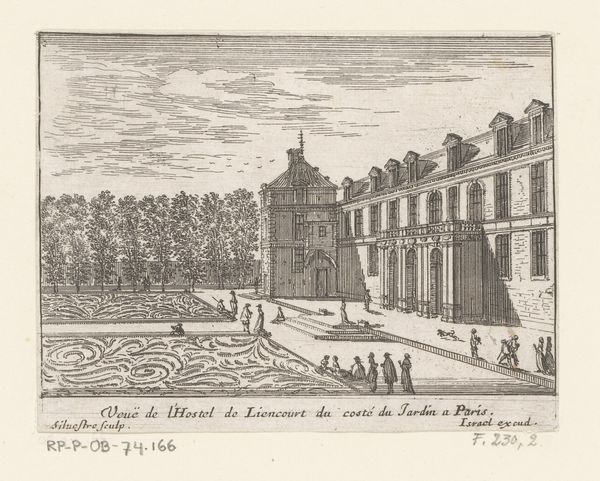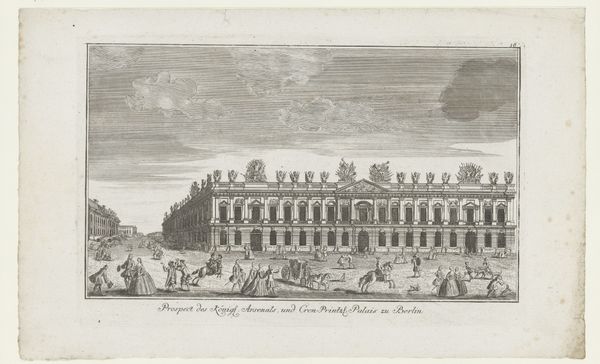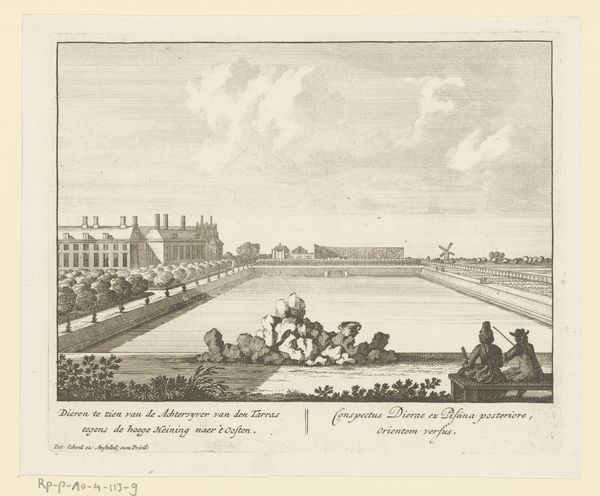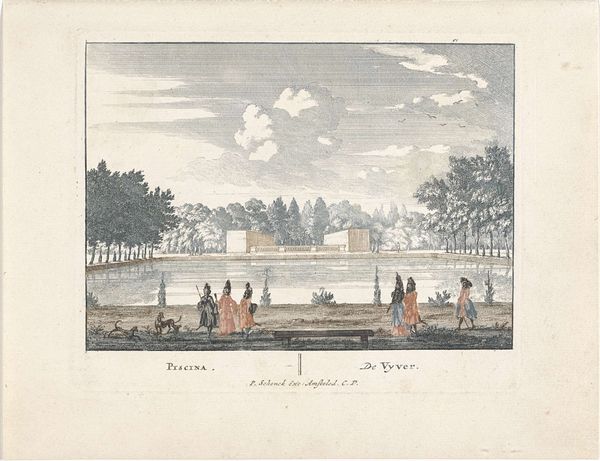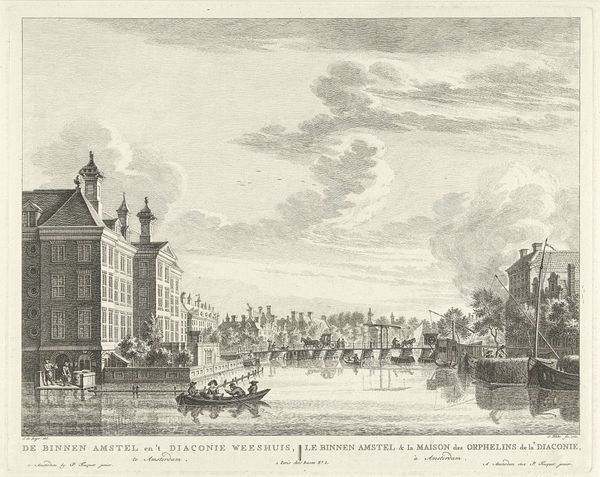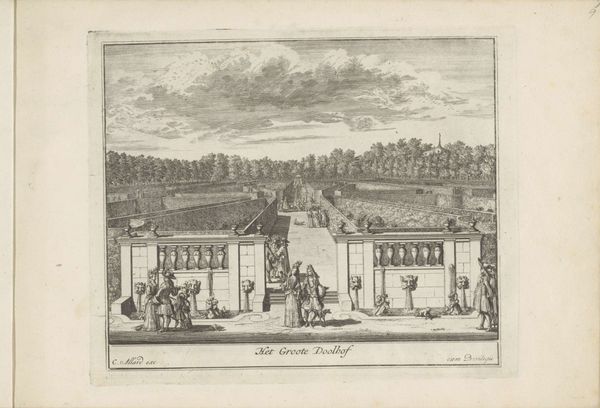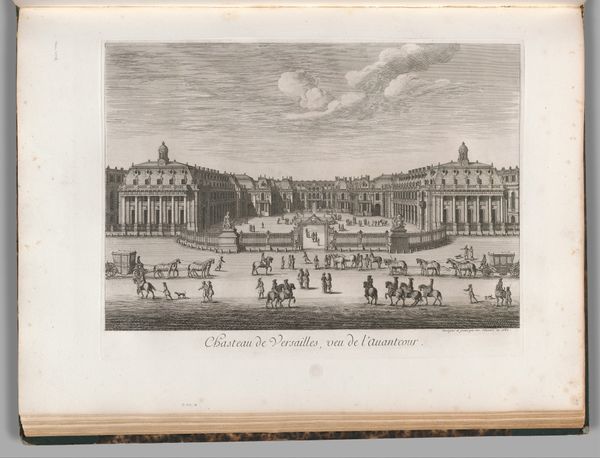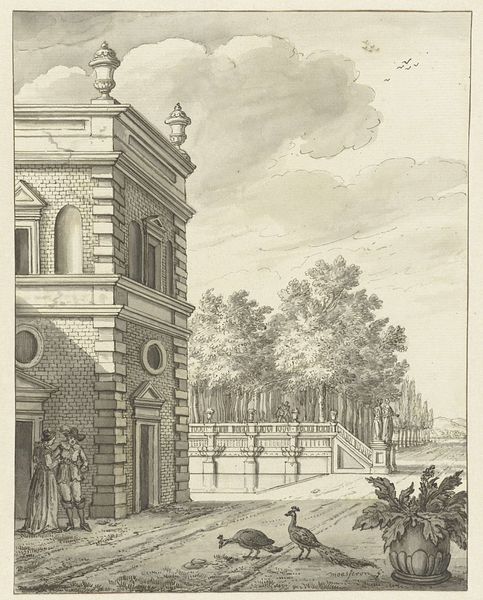
print, engraving
#
dutch-golden-age
# print
#
landscape
#
cityscape
#
engraving
Dimensions: height 130 mm, width 168 mm
Copyright: Rijks Museum: Open Domain
Curator: This engraving from between 1694 and 1697, titled "Klosbaan bij Paleis Het Loo" by Jan van Call, immediately strikes me as rather formal. The color palette is restrained. Editor: The very stillness, almost suspended animation of the figures—it whispers of a certain societal restraint and elegance, doesn’t it? Even the little dogs seem carefully posed! There is something self-conscious in this frozen moment in the yard or green before the great palace. Curator: Precisely. It's a highly structured image, even the clouds seem strategically placed. There's a clear division between the built environment – the palace and the surrounding architecture - and the more natural landscape elements beyond the fencing. And all meticulously detailed through the print medium. Editor: The palace looms, but the klosbaan, the “mail court,” takes center stage as a human activity space. The game becomes symbolic of refined leisure, a sort of stylized interaction dictated by rules. Curator: Klosbaan. Yes, “mail court," in its essence is, indeed, where men and women, in their powdered wigs, demonstrated social harmony. Think of what it implies about control: The court’s parameters are physical limits, just as manners constrain one’s impulses. These courtiers engage in play within highly defined, societal bounds. Even nature is sculpted; it speaks of man’s domination over nature. Editor: A powerful, consistent reading. Yet, despite the sense of controlled elegance, a hint of humor emerges for me, perhaps, in the somewhat awkward gait of the figures or the sheer rigidity of the scene. It's as though Van Call couldn’t help but allow some of the inherent artifice to seep through. The symbolism starts to crumble a tiny bit around the edges. Curator: Perhaps that’s testament to how the social and artistic context of Dutch Golden Age painting cannot be suppressed—not fully, at least. And as the print medium proliferated, this glimpse into court life would be widely disseminated. Editor: Indeed. Van Call has, in a way, allowed us to observe a social order perform itself, for both contemporary audiences and our own curious eyes today. Curator: Well said. A valuable piece for understanding both formal artistic arrangements, and also symbolic expressions, wouldn’t you agree?
Comments
No comments
Be the first to comment and join the conversation on the ultimate creative platform.
